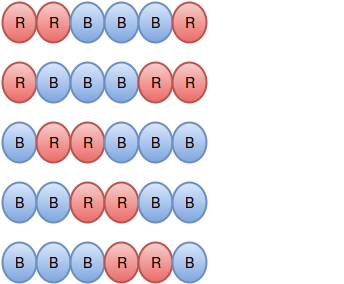Meera bought a house on Mars, and plans to decorate it with chains of alien flowers. Each flower is either red () or blue (), and Meera knows how many occurrences of RR, RB, BB, and BR she wants to see in a chain.
The diagram below shows a flower chain of length :

In this example, RR occurs times (at positions and ), RB occurs times (at positions , , and ), BB occurs time (at position ), and BR occurs times (at positions , , and ).
Meera wants your help determining how many different chains with positive length can be made. Given , and , find the number of different chains having occurrences of RR, RB, BB and BR equal to inputs , and , respectively. As the answer can be very large, your printed output should be .
Input Format
One line of space-separated, non-negative integers: (occurrences of RR), (occurrences of RB), (occurrences of BB), and (occurrences of BR), respectively.
Constraints
For Points:
For Points:
For Points:
Output Format
Find the number of chains having , and occurrences of RR, RB, BB, and BR, respectively, and print the .
Sample Input
1 1 2 1
Sample Output
5
Explanation
The flower chains having exactly , and occurrences of RR, RB, BB and BR are:
